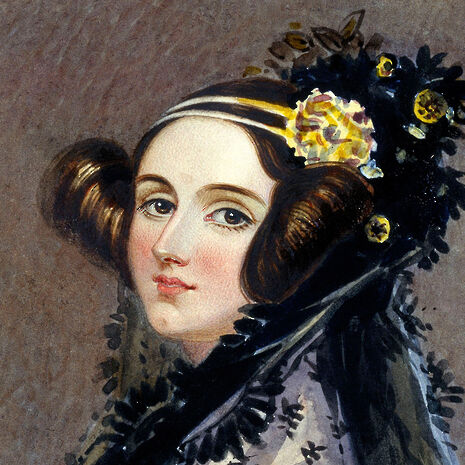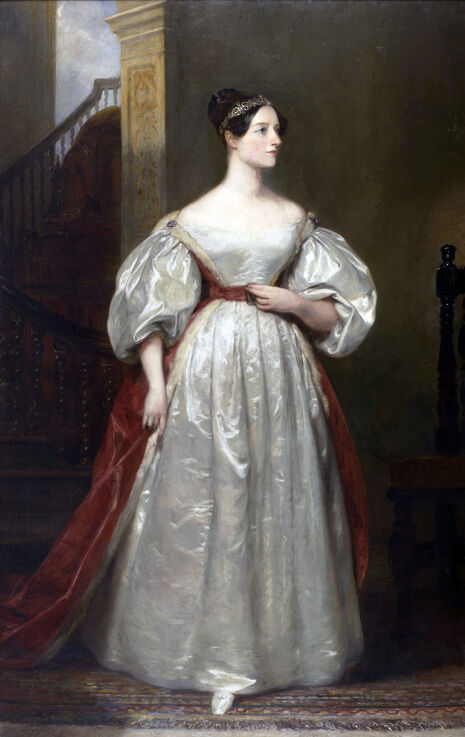Ada Lovelace, Enchantress of Numbers
Johanna Friege looks into the life of Ada Lovelace, a renowned mathematician who did not let her sex determine her academic destiny

The achievements of any person are often heavily dependent on the opportunities they receive, and this has been as true in the past as it is nowadays. The fact that historically, women weren’t given the same opportunities as their male counterparts, especially in the sciences, is a huge factor in the absence of female role models in scientific history. Women who no doubt would have had the potential to make tremendous progress in our shared scientific knowledge never had the chance to discover their potential. There is, however, a unique woman, born in 1815 in London, who received opportunities many of her peers did not. More importantly, she was one of the most capable, talented and visionary mathematical and technological thinkers of her time. This woman is Countess Ada of Lovelace, known more commonly as Ada Lovelace.
Ada was the only legitimate daughter of the (in)famous poet Lord Byron, but his marriage to Ada’s mother Annabella Milbanke was strained; Byron had an unpredictable temperament and the two split up before Ada reached toddlerhood. Although Ada never knew her father, her well-educated mother wanted to prevent her from inheriting his wild, ‘tempestuous’ moods by arranging an education that was strictly based in the sciences, mathematics and logic. This was unusual for aristocratic girls during the 19th century, who would have usually been educated in less rigorous subjects, if not completely denied an academic education.
“This woman’s physical powers of application were very much capable of withstanding these tensions of mind”
Running the risk of perpetuating the personal statement stereotype, it’s safe to say that from a young age, Ada showed a fascination for mathematics and technology. As a 12-year-old, she spent her time poring over diagrams of new inventions and periodical journals; she thought about designs for a steam-powered flying machine and the necessary proportions of the wings to the body that preceded the invention of the aerial steam engine by 15 years. Although her tutors worried that the “very great tension of mind” which her studies required was “beyond the strength of a woman’s physical power of application”, Lovelace developed an understanding of mathematics and especially computing that remained unparalleled for a century. Clearly, this woman’s physical powers of application were very much capable of withstanding these tensions of mind.

However, it’s unlikely that she would have been able to pursue her academic interests at the time, had it not been for the encouragement of her husband, the Earl of Lovelace. In this way, although Ada was intelligent and perceptive, she was still socially dependent on the support of her husband. The Earl of Lovelace was not the only significant man in Ada’s life; at the age of 17, a tutor introduced her to Charles Babbage, a mathematics professor who was already considerably well known for his engineering inventions (and is the namesake of Cambridge’s Babbage Lecture Theatre). He was almost thirty years older than her, but they quickly developed a lasting friendship.
At the time, Babbage was working on what he called the Analytical Engine, which could be considered something like a distant ancestor of the modern computer. The Analytical Engine intrigued Ada; although Babbage spoke highly of the “Enchantress of Numbers’” mathematical talents in general, he especially praised her ability – higher than anyone else’s he knew – to understand his Analytical Engine. In 1842, Ada translated an article on the Engine by the Italian mathematician Luigi Menabrea, and Babbage even asked Ada to expand upon the article in a series of notes and annotations, since she understood the machine so well; her final translation, including notes, ended up being three times the length of the original article.
Unlike Babbage, who believed his engine was confined to the computing of numbers only, Lovelace was a century ahead of her time in her ideas of representing any piece of content – whether it be music, text, pictures or sound – by numerical quantities to be manipulated by a machine such as the Analytical Engine. Her notes contained several early computer algorithms, or codes. For example, she conceived a method for the Engine to repeat a series of instructions, which is now known as looping and is a process that computers use nowadays as well. Another note proposed a method for the Engine to be programmed with a code to calculate Bernoulli numbers; this is widely considered the first algorithm to have been proposed, and thus history’s first computer program.
“The computation of sound and images, although commonplace now, was a distant future at the time”
Ada’s programs in the annotations of Menabrea’s translated article were the most elaborate and complete at the time, and were the first to be published. It’s for this reason that she is, to this day, considered the first computer programmer. However, as a woman, she published the translated and annotated article with only her initials; at the time, work by a woman, especially in her field, would hardly have been taken seriously. In fact, she died of cancer at the age of 36, and her computer programs remained unused and, for the most part, unknown until they became one of Alan Turing’s sources of inspiration for his work on the first modern computer in the 1940s.
A century before Turing’s work, a young woman had the impressive ability to conceive what, even in the 1940s, seemed impossible. The computation of sound and images, although commonplace now, was a distant future at the time; and 100 years before that, must have seemed like less than a pipe dream. No doubt it was thanks to her mother’s academic encouragement and, especially, the opportunities she provided, that Ada was given access to the knowledge and resources she needed. Potentially, these ideas could have been developed much further, if she’d been able to gain the same exposure and prominence as someone like Charles Babbage
 News / SU reluctantly registers controversial women’s soc18 December 2025
News / SU reluctantly registers controversial women’s soc18 December 2025 Features / Should I stay or should I go? Cambridge students and alumni reflect on how their memories stay with them15 December 2025
Features / Should I stay or should I go? Cambridge students and alumni reflect on how their memories stay with them15 December 2025 News / Dons warn PM about Vet School closure16 December 2025
News / Dons warn PM about Vet School closure16 December 2025 News / Cambridge study finds students learn better with notes than AI13 December 2025
News / Cambridge study finds students learn better with notes than AI13 December 2025 News / Uni registers controversial new women’s society28 November 2025
News / Uni registers controversial new women’s society28 November 2025








